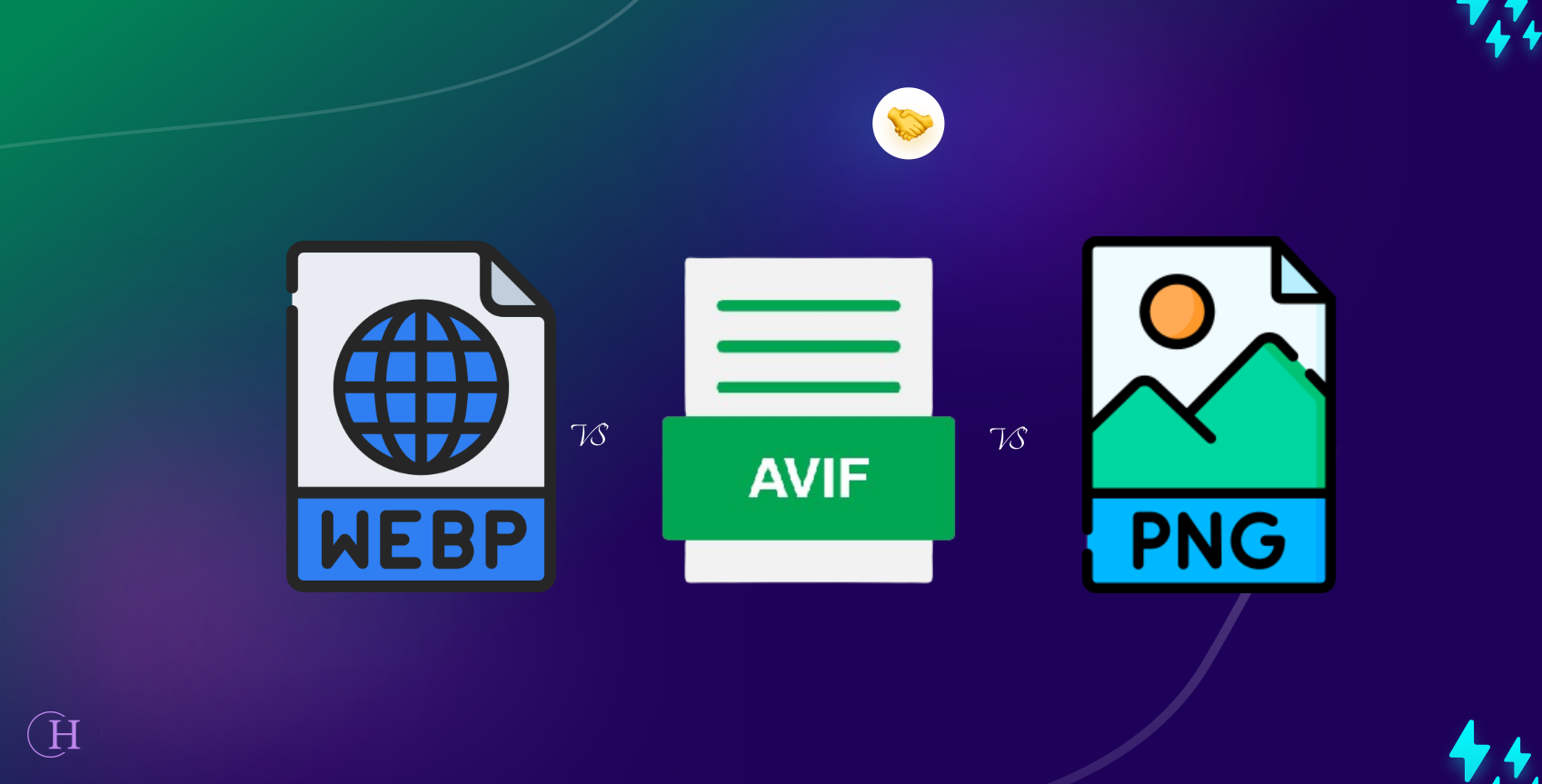
Exploring Image Formats: WebP vs AVIF vs PNG
Optimize web images with WebP, AVIF, and PNG. Delve into their strengths for fast-loading and visually appealing websites.

Hoceine El Idrissi
Full Stack Developer
Exploring Image Formats: WebP vs AVIF vs PNG
In the dynamic realm of web development, optimizing images is a crucial aspect of ensuring fast-loading and visually appealing websites. Three prominent image formats, namely WebP, AVIF, and PNG, vie for attention when it comes to balancing image quality and file size. Let's delve into the characteristics of each format to understand their strengths and best use cases.
WebP: The Versatile Contender
Introduction
WebP, developed by Google, stands out as a versatile and efficient image format. It employs both lossy and lossless compression, making it suitable for a wide range of use cases.
Advantages
- Small File Sizes: WebP excels at providing smaller file sizes without compromising image quality. This is particularly beneficial for improving website loading times, especially on bandwidth-constrained networks.
- Lossless and Lossy Compression: WebP offers the flexibility of both lossy and lossless compression. Developers can choose the compression type based on their specific needs, balancing file size reduction and image quality.
- Animation Support: WebP supports animated images, providing a viable alternative to GIFs with better compression efficiency. This is particularly advantageous for creating visually appealing and lightweight animations.
- Wide Browser Support: Over time, major web browsers have embraced WebP, enhancing its compatibility. This ensures that a significant portion of internet users can benefit from the optimized images delivered in WebP format.
Use Cases
- WebP is ideal for general web usage where reducing image file size without sacrificing quality is a priority.
- It is particularly beneficial for image-heavy websites and applications.
AVIF: The Next-Gen Contender
Introduction
AVIF, short for AV1 Image File Format, represents the latest entrant into the image format arena. It is based on the AV1 video codec, offering impressive compression efficiency.
Advantages
- Outstanding Compression Efficiency: AVIF is renowned for its exceptional compression efficiency, often outperforming other image formats, including WebP. This results in significantly smaller file sizes while retaining high image quality.
- HDR Support: AVIF supports High Dynamic Range (HDR), enabling a broader range of colors and luminance levels. This makes it an excellent choice for images that require enhanced color representation.
- Lossless and Lossy Compression: Similar to WebP, AVIF supports both lossless and lossy compression, providing flexibility based on specific use cases.
- Modern Codec Technology: AVIF benefits from the advancements in video codec technology, offering a modern and future-proof solution for image compression.
Use Cases
- AVIF is recommended for scenarios where achieving the highest compression efficiency while maintaining image quality is a priority.
- It is suitable for applications and platforms that can take advantage of HDR capabilities.
PNG: The Reliable Classic
Introduction
PNG, or Portable Network Graphics, has been a stalwart in the world of web graphics for years. It is known for its lossless compression and support for transparency.
Advantages
- Lossless Compression: PNG employs lossless compression, ensuring that no image data is lost during the compression process. This makes it suitable for scenarios where maintaining the highest image quality is paramount.
- Transparency Support: PNG supports alpha channels, allowing for transparent backgrounds. This feature is crucial for images that need to overlay on different backgrounds seamlessly.
- Widespread Browser Support: PNG enjoys widespread support across various web browsers, making it a reliable choice for ensuring consistent image rendering.
Use Cases
- PNG is the preferred format for images that require transparency, such as logos and icons.
- It is suitable for situations where maintaining the highest possible image quality is essential, even if it results in larger file sizes.
Choosing the Right Format: Considerations
- Content Type: The nature of the content plays a significant role in selecting the appropriate format. For photographs and general web images, WebP or AVIF may be preferred, while PNG remains a solid choice for images requiring transparency.
- Browser Support: Consider the browsers your audience commonly uses. While WebP has widespread support, AVIF support is growing but might not be universal. PNG, on the other hand, enjoys broad compatibility.
- Compression Requirements: Evaluate the level of compression required. If achieving the smallest file size is crucial, AVIF often excels. For a balance between size and compatibility, WebP is a strong contender.
- Transparency: If your images require transparency, PNG is a reliable option. Both WebP and AVIF also support transparency but might have varied browser support.
In conclusion, the choice between WebP, AVIF, and PNG depends on specific project requirements. Web developers should carefully assess factors such as compression needs, transparency, browser support, and content type to optimize the performance and visual appeal of their websites.